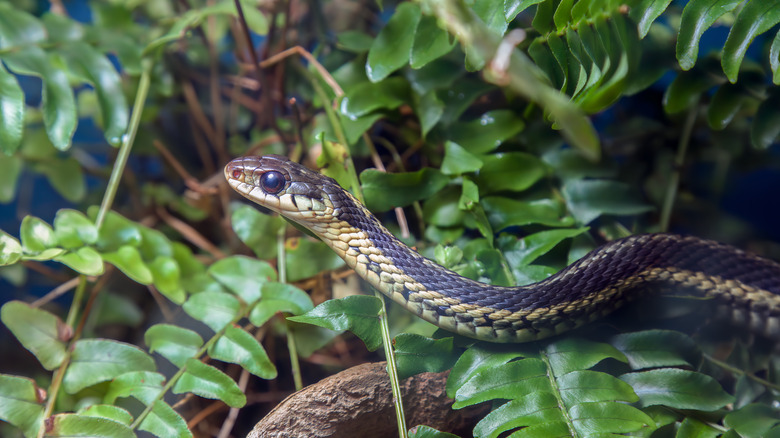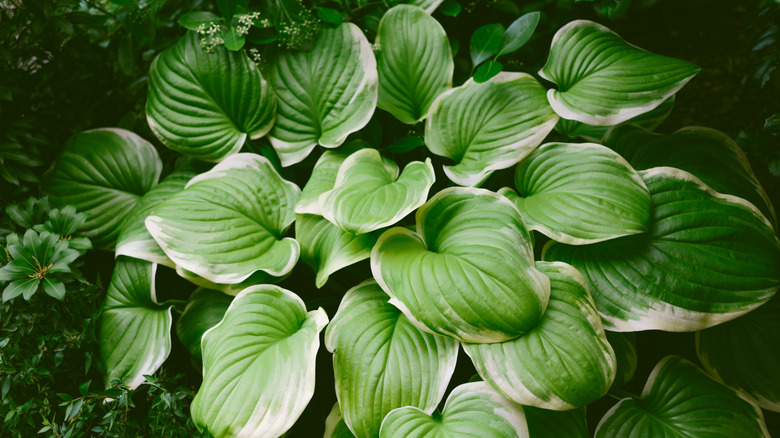The Popular Garden Plant Snakes Love To Hide In (And What You Can Do About It)
It's one thing to spot a butterfly fluttering around your garden and quite another to see something slithering through your flower beds. While most garden snakes are harmless, their sudden appearance can still be alarming, especially when they're hiding in places you least expect. Hostas are a popular flowering perennial that may keep your garden looking lush all year long, but they are also among the most common snake-hiding spots. Understanding why can help you take back control of your garden.
Snakes seek out gardens for two main reasons: shelter and food. Hostas provide both. Their broad, layered leaves form dense canopies that block out sunlight and trap moisture, creating a cool, shaded microclimate that's ideal for a reptile trying to escape heat or predators. Beneath this popular perennial's large leaves, the soil stays damp and hidden – exactly the kind of environment snakes prefer.
On top of that, the same common backyard features that make hostas attractive to snakes also draw in slugs, snails, and small rodents; all of which are on a snake's menu. But keep in mind that hostas aren't the only culprits. Any thick ground cover or tall grasses can offer a similar welcome mat, especially when the area is left undisturbed. Without proper awareness, you might be inviting unwanted guests to settle in right at your feet.
What you can do about snakes hiding in your garden plants
Snakes may be drawn to your garden, but that doesn't mean you're powerless to stop them. With a few thoughtful adjustments, you can make your outdoor space far less inviting and keep snakes out of your flower beds. The first step is simple garden hygiene. You need to start by removing the things snakes love most. That includes piles of wood, thick mulch beds, and overgrown patches where shade and moisture collect. Cutting back dense ground covers, trimming the lower leaves of plants like hostas, and avoiding excessive watering can all help dry out the cool hiding places snakes seek.
Moreover, reducing food sources, like slugs, rodents, and beetles, makes your yard less appealing. That might mean cleaning up dropped fruit, storing compost properly, or blocking holes around your home's foundation where pests could sneak in. Of course, not every plant needs to go. If you're worried about hostas but still want a beautiful shade garden, try swapping them out for less snake-friendly options.
Some sun-loving plants like marigolds, lemongrass, and other strongly scented plants may help deter them, though no plant is guaranteed to keep snakes away. In truth, not all snakes are enemies. Garter snakes, for instance, are harmless and actually help by keeping pest populations in check. So, unless you're dealing with venomous species, a snake or two may quietly be doing more good than harm. Still, with smart plant choices and regular upkeep, you can enjoy a vibrant, snake-resistant garden without giving up your favorite greens.

